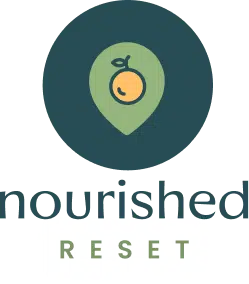
It feels like everyone is talking about the healing power of the breath these days. I know, it sounds like just one more trend to add to the egregiously growing list of to-do’s from the latest HIIT workout to the newest diet trend, and here is one more thing you need to do to be healthy, right?
Friend, I am here to tell you that it’s not true.
Breathwork is not a trend; it’s been around for thousands of years and has been used to clear the mind and support good health.
Intentional breathing has been an important part of my journey, and that’s why I’m honored to be providing breathwork sessions in the Lindywell app—the power of slowing down and breathing with intention cannot be underestimated.
Whether breathwork is new or familiar to you, or you just want to learn more about it, you’ve come to the right place.

My Breathwork Journey
I am a recovering wellness-a-holic and like many folks trying to manage the lack of control we felt in 2020, I bought everything the internet said would support my self-care journey (I see you, Peloton getting dusty in the corner).
It was toward the end of 2020 that I found myself feeling mentally worn and emotionally drained. I have a pretty serious trauma history and that year brought a lot of unresolved pain to the surface. There was nothing left in my tank so I turned to my trusted advisor, Google, to help me figure out why I couldn’t get out of this funk.
One of the suggestions I came across was breathwork. This practice intentionally manipulates the breath to create a deeper connection to the self along with other benefits, including mental clarity, spiritual connection, and a calm nervous system.
It couldn’t hurt; it was just breathing, right?
Something happened when I took my first 15-minute class. Did it up my self-care game? Sure, but it did something even better than that. It oxygenated my brain enough to think a little more clearly. I felt instantly calm in my body and that feeling lasted well after the session.
It even brought up a few tears (rest can do that, you know). It also gave me enough coherence to make the next right move: find a therapist to help me through this turbulent time. One step led to another, and with the routine of near-daily breathwork, I started to get better and better. I was aiding in the healing of my nervous system. That was in my control.
Who knew one little class would lead this elementary teacher to a new career? And as a teacher, I like to geek out on the benefits (yes, it’s backed by science). So let’s dig into how breath impacts your body and how you can start practicing right there, right now!

The Connection Between Breath and Stress
The healing power of the breath is especially obvious when we look at how it impacts stress. To understand how breathing can reduce stress, it’s important to first understand the connection between the two. Stress is a natural response to perceived threats or challenges, and triggers the body’s “fight or flight” response.
When we experience stress, the body releases stress hormones like cortisol and adrenaline, which cause a range of physical changes such as increased heart rate and tense muscles. When you’re stressed, your breathing also changes, becoming rapid and shallow.
By taking deep, slow breaths, you can activate the parasympathetic nervous system, which helps to counteract the “fight or flight” response and promote relaxation. Let’s look at a few ways this plays out in the body.
Breathing and the Autonomic Nervous System
Breathing is closely linked to the autonomic nervous system. This system controls bodily functions that occur without conscious control, like heart rate, digestion, and respiration. Breathing can directly influence the activity of this system with each inhale and exhale.
- Inhale: When you breathe in, your heart rate increases, and your blood vessels constrict, activating the sympathetic nervous system.
- Exhale: When you breathe out, your heart rate slows down, and your blood vessels dilate, activating the parasympathetic nervous system.
With intentional breathing, you shift your physiological response from the sympathetic (“fight or flight”) to the parasympathetic nervous system (“rest and digest”) inducing a state of relaxation and calmness.
Breathing and Stress Hormones
Stress triggers the release of hormones such as cortisol and adrenaline, which prepare the body for a “fight or flight” response. Breathing also plays a role in regulating the release of stress hormones, but in the opposite way: when you intentionally slow and deepen your breath, you reduce your levels of cortisol, which in turn can reduce blood pressure and help you feel more relaxed and at ease.
Breathing and Muscle Tension
Stress can cause muscle tension and tightness, which often leads to more feelings of anxiety and stress as the body tightens and constricts. When you breathe deeply, you take in more oxygen and trigger the parasympathetic nervous system, which encourages muscle release. As this happens, you may feel a sensation of less stress and more relaxation.
Breathing Techniques for Stress Reduction
At Lindywell, we bring breath into each and every Pilates workout. While this is a powerful way to get intentional with your breathing, we encourage you to take it one step further and practice breathwork on its own. This can allow you to slow down, connect inward, focus on letting go of anxiety and stress, and let the breath support you.
Plus, there are many different breathing exercises that can help you reduce stress but would be challenging to do while moving your body! Here are a few different techniques to try.
Remember that as a member of Lindywell, you have access to all of our breathwork practice. A great place to start is with our Breathwork Basics session. Start your 14-day free trial to experience breathwork from Lindywell for yourself!
Box Breathing (4×4)
This is a simple and effective technique for reducing stress and you can do it anytime, any place, from your car to your workspace. This is a great exercise to do with children as well. My kids make the shape of a box by drawing one side with each step.
Pro tip: Make this a practice in your home when all is calm. You want your kids to build muscle memory so that when tensions rise, they have this tool in their toolbox.
How to do it: Take a slow, deep breath through your nose for four seconds, feeling your stomach expand as you inhale. Hold your breath for four seconds, then exhale slowly through your mouth for four seconds. Hold at the end for four seconds and repeat for 3-5 minutes.
4-7-8 Breathing
This technique, also known as “relaxing breath,” was popularized by Dr. Andrew Weil. It’s designed to promote relaxation and reduce stress and anxiety. It can also help you sleep better, reduce blood pressure, and increase focus and concentration. In other words, it’s beneficial to do almost any time! It can be helpful to place one hand on your chest and the other on your stomach, but this isn’t necessary.
How to do it: Take a slow, deep breath through your nose for four counts, hold the breath for seven counts, then exhale slowly through your mouth for eight counts. Start by repeating this breathing pattern for 4 cycles and work up to 8 as you feel more comfortable.
The Healing Power of the Breath Cannot Be Overlooked
I’ve learned that the healing power of the breath cannot be underestimated. Breathwork is a powerful way to stimulate your nervous system, regulate your emotions, feel more relaxed, and ultimately, reduce stress and anxiety.
This practice has had a massive impact on my own trauma-healing journey. I can honestly say that I would not be here at Lindywell if it weren’t for this self-care Google search that turned into a life-changing practice. We hope that you give it a try to experience the power for yourself.









2 thoughts on “<strong>The Healing Power of the Breath</strong>”
I find Keisha’s Breathwork sessions cathartic. While caring for my dad earlier this year before he passed, I participated in one of her hour-long breathwork sessions and released stress and tension I didn’t realize I was holding. I felt drained, yet refreshed when done. It was truly a beautiful experience. I am looking forward to participating in the Breathwork for Grief coming up next week. Thank you for opening up my world!
Thank you so much for sharing, Anne, and we are so sorry for your loss and all that you went through. We look forward to seeing you at Exhale Hour on Tuesday!